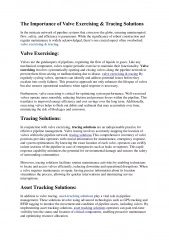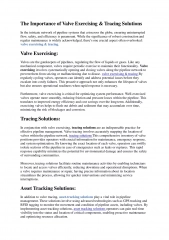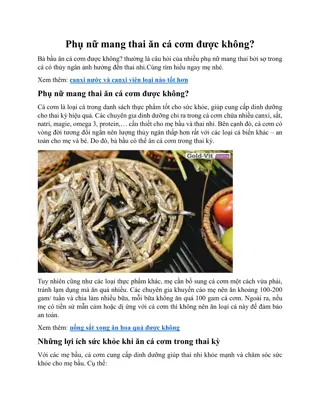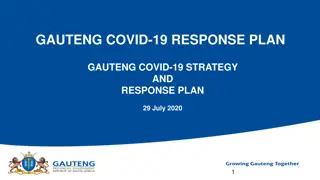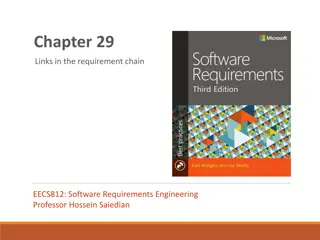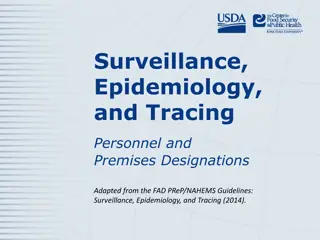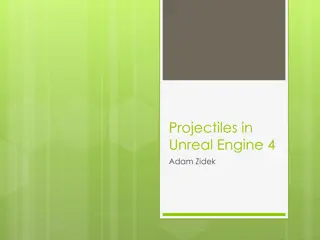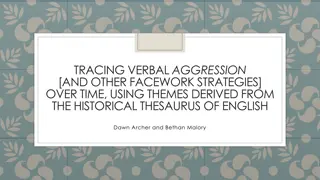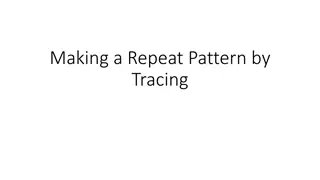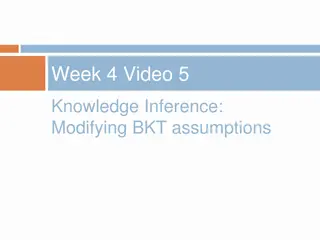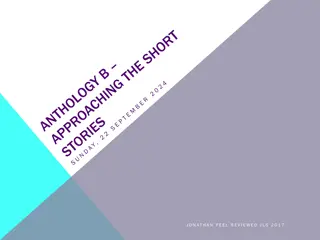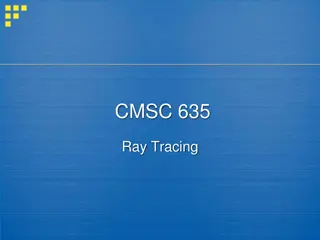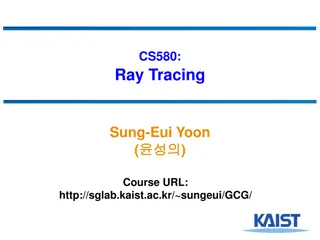
Tracing Stories of Home through Hmong History & Cultural Studies Curriculum 2024
Explore the impact of war and displacement on the Hmong community, investigate refugee narratives, and create a personal story cloth to trace family history in this engaging educational curriculum.
Download Presentation

Please find below an Image/Link to download the presentation.
The content on the website is provided AS IS for your information and personal use only. It may not be sold, licensed, or shared on other websites without obtaining consent from the author. If you encounter any issues during the download, it is possible that the publisher has removed the file from their server.
You are allowed to download the files provided on this website for personal or commercial use, subject to the condition that they are used lawfully. All files are the property of their respective owners.
The content on the website is provided AS IS for your information and personal use only. It may not be sold, licensed, or shared on other websites without obtaining consent from the author.
E N D
Presentation Transcript
HMONG HISTORY AND CULTURAL STUDIES MODEL CURRICULUM 2024 Tracing Stories of Home HHCSMC Hmong History & Cultural Studies Model Curriculum
Learning Outcomes and Compelling Questions Big Idea: History & Narratives Enduring Understanding: Our history, culture, and experiences shape our identity and perspectives. Essential Questions: Why do people move? How does war affect people s concept of what home is? How is war connected to the history and displacement of the Hmong in Laos, Vietnam, Thailand, and China? Lesson Questions: How is war connected to the history and displacement of Hmong in Laos, Vietnam, Thailand, and China? What impact does war have on people when they must relocate to a new country? What is a refugee? How is that different from an immigrant?
Culminating Task TASK (What I will do): I will trace my family history by interviewing a family, relative, or community person about my (ancestor s) refugee/immigrant story and create a story cloth with a narrative that tells when my family moved to this city and who and why they came here Criteria for Success (How I will demonstrate my learning): I have identified WHO and WHEN to do the interview. I have my interview questions ready. I know WHAT primary or secondary sources I will use and HOW I will obtain these (e.g., photos, tapes, videos, letters, newspaper, interviews, etc.). I have a detailed story cloth. I include a written narrative that tells WHEN my family moved to our community and WHO and WHY they came here. I am prepared to present my story cloth (practice using S.T.A.R rubric)
S.T.A.R. Presentation TASK (What I will do): I will trace my family history by interviewing a family, relative, or community person about my (ancestor s) refugee/immigrant story and create a story cloth with a narrative that tells when my family moved to this city and who and why they came here Criteria for Success (How I will demonstrate my learning): I have identified WHO and WHEN to do the interview. I have my interview questions ready. I know WHAT primary or secondary sources I will use and HOW I will obtain these (e.g., photos, tapes, videos, letters, newspaper, interviews, etc.). I have a detailed story cloth. I include a written narrative that tells WHEN my family moved to our community and WHO and WHY they came here. I am prepared to present my story cloth (practice using S.T.A.R rubric) S.T.A.R Presentation Rubric can be found in the Handout section.
Learning Objectives Today, I will be able to ..(content & language objectives): Discuss the lesson the main character learned in the story Describe what home is to Mai and her grandma. This is important because .. (relevance): People come to America for different reasons, sometimes against their own will; it s important to understand their loss and pain and help them feel accepted in
Reading Questions 1st read (Restatement: What does the text say?): 2nd read (Description: How does the text say it?) 3rd read (Interpretation: What does the text mean?) 4th read (Application: What does the text mean to me, others, and the world? What does the text inspire me to do?)
The Whispering Cloth: A Refugees Story What do you see or notice in the story cloth? What do you think is happening? What wonderings/questions do you have? Part of the title says A Refugee s Story. Ask - What is a refugee and how is that different from an immigrant? Based on the title and on what we read about story cloth and the Hmong, what do you think this book might be about?
The Whispering Cloth: A Refugees Story The Whispering Cloth: A Refugee s Story Written by: Pegi Deitz Shea Illustrated by: Anita Riggio Stitched by: You Yang
The Whispering Cloth: Pages 1 & 2 After Mai s cousin moved to America, Mai passed the days with Grandma at the Widow s Store, watching the women do pa ndau story cloths. She loved listening to the widows stitch and talk, stitch and talk-mostly about their lives back in Laos, and about their grandmothers lives in China a hundred years ago. All Mai could remember was life inside the refugee camp, where everyone seemed to come and go but her. 1.Where is the setting of the story? 2.What do the widows do?
The Whispering Cloth: Pages 3 & 4 Mai! came Grandma s crackly voice. Put Cousin s letter away. The words will disappear if you read them one more time. Come help me with the pa ndauborders. But I don t know how. Grandma threaded a needle and wrapped her hand around Mai s. Push the needle up through the cloth. Grandma instructed. And poke it back in when it has gone the length of a grain of rice. 1.What does Mai s Grandma want to teach her? 2.Where do you think Mai s cousin who wrote the letter lives and why do you say that?
The Whispering Cloth: Pages 5 & 6 For many weeks, Mai practiced stitching, stitches that were short and straight, ones that looped inside others, ones that twirled into long strands, and stitches that looked like dots. Beautiful, praised Grandma, amazed at Mai s skill. You are ready to go on. Grandma then began drawing herbs and animals on the pa ndau borders for Mai to embroider. By the end of the hot season, Mai was drawing and stitching her own border designs-vines of milky jasmine, bursts of purple orchid, palm trees plump with papaya. 1.What does Mai learn to do? 2.What does Grandma mean when she says You are ready to go on.?
The Whispering Cloth: Pages 7 & 8 Hurry and finish, Mai, Grandma said one day. The traders will be coming soon from Chiang Khan. How much will they pay for the ones I helped on? Mai asked, knotting her last stitch. Twice as much as the others, Grandma bragged. You sew even better than your mother did when she was alive. And her pa ndauwere prized throughout the hills. 1.What does Grandma mean when she says, And her pa ndauwere prized throughout the hills ?
The Whispering Cloth: Pages 9 & 10 Paang paang! Paang makh! the traders complained when Grandma demanded 500 Thai baht for her pa ndau. But when they saw the fine detail of the borders, the traders agreed to pay 400 baht - twice the usual price. Keep stitching, Mai, Grandma said when the traders left. And we ll fly from this camp before the rabbit breeds again. 1.Why does Grandma demand 500 Thai baht for Mai s pa ndau? What is a baht?
The Whispering Cloth: Pages 11 & 12 Mai s hands went back to work on the borders. But her eyes and ears were drawn to the tribal stories the women stitched inside the borders. Every time the wind rippled the pa ndau hanging at the Widow s Store, Mai heard words in the air. Grandma, I want to do a whole pa ndaumyself, she said finally. Can you give me a story? If you do not have a story of your own, you are not ready to do a pa ndau. Mai tried for days to think of a story she could stitch. But all the good ones were already whispering around her. 1.What inspires Mai to want to do a whole pa ndau by herself?
The Whispering Cloth: Pages 13 & 14 One night, Mai s fingers cramped so much that she couldn t sleep. Grandma lay down on the mat beside Mai, enfolded her, and rubbed her hands. Grandma s soothing made Mai remember how she had slept when she was little, snug as a banana in a bunch. Snug with her mother behind her, her father in front of her. Mai s lower lip began to quiver. I want my mommy and daddy, she cried softly. I know, I know , Grandma said. Call to them, Mai. Call their spirits with the words in your fingers. Mai closed her eyes and tried to picture her parents. Flashes, noises, smells bombarded her. A story was erupting in her head-a story she could stitch 1.Why is Grandma asking Mai to call to her parents spirit?
The Whispering Cloth: Pages 15 & 16 Little Mai slept between her mother and father, who were very beautiful even though blood dripped from their heads. Grandmother put Mai in a basket on her back and ran through the paddies to the riverboats. Soldiers fired. Bullets whistled over the people s heads and made rings in the brown Mekong. On the other side of the river, soldiers in different clothes took them to a crowded village inside a tall fence. What is the name of the river? Is this the same river that Dia s family and many Hmong crossed? What is the other side ?
The Whispering Cloth: Pages 17 & 18 People stood in long lines to get little bags of rice and dried fish. Mai grew taller. She passed the days watching the blacksmiths make knives and tools. Sometimes she pounded balls of silver into flat sheets for the jewelry maker. She helped Grandmother grow chilies and coriander. Mai searched for empty glass bottles. When she put them upside down in the ground around her hut, they sparkled. This is how Mai lived for many years. How did Mai live for many years?
The Whispering Cloth: Page 19 Mai finished her pa ndau as the rainy season was ending. Grandma, how much will the traders pay for my pa ndau? Enough to fly to America? Grandma ran her fingers over the needlework. Then she took the pa ndau by the corners and held it up to the breeze. She turned her head so that her good ear grazed the stitches. After a long time she whispered, The traders will offer nothing. Nothing? Mai cried in frustration. The pa ndau tells me it has not finished its story, Grandma replied. But I have nothing to tell. Grandma squinted, pushing yellow through the eye of a needle. There is always more thread. 1.Why does Grandma tell Mai that her pa ndau has not finished its story?
The Whispering Cloth: Page 20 Mai grabbed her pa ndau and ran through the muddy lanes of brown huts all the way to the camp border.
The Whispering Cloth: Pages 21 & 22 There, rainwater gushed freely through the barbed fence and joined a stream beyond. Mai stood in the water and let it wash over her feet. She stared out past the fence for a long time. Then she sat down on the bank and began to stitch. 1.What do you think Mai began to stitch about?
The Whispering Cloth: Pages 23 & 24 One day, Grandmother and Mai flew inside an airplane. They glided softly above boxes of land to a village where homes were big as mahogany trees. Mai and her cousins built men with white crystals, swam in curling salt water, read books with beautiful pictures. And at night, Mai struggled with Grandmother in a yellow bed with a silky roof. In her dream, where did Mai fly to? Why do you say that?
The Whispering Cloth: Pages 25 & 26 Many days later Mai rejoined the women at the Widows Store and showed them her finished pa ndau. It is very fine, Grandma said. I like the bed with the roof. How much will the traders give me? It is worth much What do you think? Mai picked up the pa ndau, but the wind blew it back against her. The short, rough stitches of her father s hand stood up from the cloth to stroke Mai s chin. She tried to speak, but the smooth stitches of her mother s cheeks hushed her lips. Mai? Grandma nudges her. How much?
The Whispering Cloth: Page 27 Nothing, Mai whispered, clutching the story cloth. Nothing? The pa ndau tells me it is not for sale. 1.Why does Mai say, The pa ndau tells me it is not for sale. (How did her feelings about wanting to make a pa ndau of her own and sell it change from the beginning to the end of the story?)
Evaluation A lesson is something we learn from making mistakes or when we have a change of heart from something we realize it s not what we wanted and were thinking after all. For example, we may not want to be around someone in our family because they do things (e.g., talking too much, taking our toys, we feel they do not love us) that annoy us or sadden us. We may even say hurtful things to them like, I can t wait until I m on my own. But later when we move out, we realized that we miss them for the annoying things they do or come to understand that they love us because they gave up something to make us happy. Partner Discussion - With a partner, discuss the lesson the main character, Mai, learned from doing her own pa ndau.
The Hmong Diaspora The Secret War caused many Hmong from Laos to become a displaced people, resulting in a greater diaspora than when they left China. From Thailand, they relocated to different parts of the world. Some of the countries that sponsored them include the United States of America, France, Australia, Canada, Argentina, and Germany. Today, the majority of Hmong still live in China, Thailand, Vietnam, and Laos. Living all over the world for the Hmong, what would you say a home is to the Hmong?
Journal Writing In your journal, define why Mai is a refugee and not an immigrant. Explain what is home to Mai and provide examples from the story to support your answer.
Oral History Project I will trace my family history by interviewing a family, relative, or community person about my (ancestor s) refugee/immigrant story (using suggested interview questions below) and create a story cloth with a narrative that tells when my family moved to this city and who and why they came here.
Interview Questions 1.What is your name and where were you born? 2.How old were you during the Secret War and what was your occupation? 3.What was your life like during the Secret War? How did you feel about the war at the time? 4.In what ways were you affected by the Secret War? 5.What specific event do you remember about the Secret War? 6.Did you or your family had to cross the Mekong River? If so, what was that like? 7.Did you live in the refugee camp? If so, describe you experience there. 8.When did you come to the United States? Where did your family settle? What was life like when you first come to America? Why did you relocate or move to where you are now? 9.What are your hopes, goals, and dreams for your children/grandchildren in America? 10.Share one lesson you learned from your experience or an advice to help young people understand and appreciate the Hmong s contributions to the Secret War in Laos. 11.Please provide any primary or secondary sources you have (e.g., photos,letters, diaries, journals, etc.
Closure Did I meet my objective today? Discuss the lesson the main character learned in the story Describe what home is to Mai and her grandma Success Criteria I know I have met the objective because I am able to Explain the lesson Mai learned to a partner Define what displaced and refugee mean Provide examples of what home is to Mai

